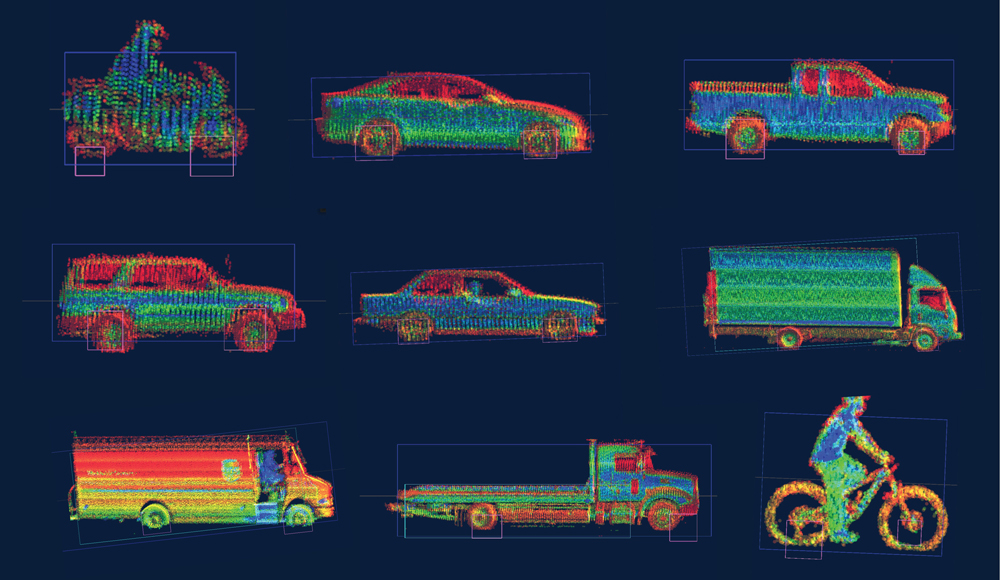
New York State’s Governor Mario M. Cuomo Bridge, crossing one of the widest parts of the Hudson River, was completed this summer. The $3.98 billion, 3.1-mile-long twin-span structure, just 20 or so miles north of New York City, replaces the Tappan Zee Bridge.
It connects to the existing highway approaches of the New York State Thruway – on Interstates 87 and 287 - on both river banks.
As a construction project in its own right, it is an impressive build - one of the largest-ever transportation design-build contracts in the US, in fact. But it is the level of ITS which was built into it which may end up providing some of the most significant enhancements to its users’ daily lives over the planned 100-year life of the bridge itself.

Tappan Zee came from the analogue era of the 1950s; Cuomo is something else altogether. Cuomo connects road traffic between Rockland and Westchester counties, providing eight general traffic lanes, plus dedicated bus lanes and shoulders for emergency access. It also carries a shared-use path (dedicated for bicycles and pedestrians) on its northern span.
There are built-in Weigh in Motion (WiM) systems to measure vehicle weights and traffic volume data.
Energy-efficient LED lighting is connected, allowing operators to remotely programme lights, schedule maintenance activities and show real-time trending of energy usage.
As well as digital highway signage to inform drivers of traffic disruptions and speed limit changes, there are digital lane control signs and real-time monitoring of road temperatures and local weather.
Future requirements
The bridge was designed to carry a new, enhanced regional bus service and has foundations which will be sufficient for future commuter or light rail on structures between the two spans – in short, it has been built to anticipate future mobility requirements. The digital lane control signs support the bus lane operation and allow for dynamic lane management on the bridge. These signs also help manage lane closures due to maintenance or incidents on the facility.
Cuomo will provide greater traffic capacity while improving operations and safety for motorists, insists lead design company HDR.
Perhaps the biggest change is that the project installed the Thruway’s first all-electronic tolling (AET) system. “The existing toll collection was kind of a mixed plaza where you could pay in cash, or they had a higher speed EZ Pass, which wasn’t full open-road tolling, but you can drive through without a gate,” explains ITS expert Phil Riggio, HDR’s New York/New Jersey Advanced Technologies Section lead, who was the ITS lead on the Cuomo Bridge.
Riggio explains to ITS International about the bridge’s ITS needs and how they were incorporated into the project.

“Requirements came from a few different places,” he says. “It was a design-build project and we were the designers working for the contractor to provide the final design documents. We also had a systems engineering component to our role as designer so we didn’t just take the technical requirements and jump into plans.”
Various challenges were involved in integrating the different ITS elements into the new AET set-up.
“Having the system engineering component really helped because we were able to get a good understanding of how they functioned and how they want it to function,” he says.
HDR developed a systems engineering document. “It defined sub-systems, data flows between the sub-systems, where the control points were, what the third-party interfaces to our system are going to be,” Riggio adds.
Unique opportunity
Specifications emerged naturally out of that initial process, taking the best of what the old systems had to offer and then thinking about how new technology would improve things. So it’s not that things were bad before, Riggio insists, it’s just that existing systems were not sufficient.
“That’s pretty typical when you visit these facilities, because a lot of the old systems are implemented over time,” points out Riggio. “We had a unique opportunity for integration: we were completely starting over. One thing we’re able to do, because we’re building the bridge from scratch, is to design shared infrastructure: the electrical distribution, the power distribution, and the communications networks were designed to service all systems on the bridge.”
Building from the bottom up allows integration, supporting the multiple ITS and other systems which are on the bridge, from structural health monitoring to IT and even aesthetic lighting (great for helping river traffic to navigate – and for lighting up the structure in green on St Patrick’s Day, for instance).
“And there are other systems out there as well: because we’re starting from scratch, we could build one power distribution system from scratch to support everything, we could build one fibre-optic backbone and one communications network to support almost everything that was out there,” Riggio continues.
“There’s also integration with third parties and with non-ITS systems,” he says. “We were able to integrate with other Thruway systems.”

Control of the various elements on the Cuomo Bridge is handled remotely, from a state-wide operations facility in Albany. “They have both state police and IT operations personnel, it’s a pretty impressive centre.”
Computer-aided dispatch (CAD) is handled from there. Incidents may be identified through several means, including the travel time system, the CCTV system or call-ins. “So when an incident is created, it’s created in CAD and is pushed to the ITS system,” Riggio explains. “There’s no dual entry of incidents. And as updates happen, and when the incident is clear, that’s also pushed from the CAD system to the ITS system. So it’s not part of ITS, it is integrated as part of the project. And then there’s also all the components that are not considered ITS like the structural health-monitoring system on the new bridges: all the weather data that’s accumulated there gets pulled into the ITS system.”
The weather data is used by the system, with operator confirmation, to reduce speed limits on the bridge during high wind and other bad weather conditions. Ultimately, motorists on the bridge benefit from this incident management through faster response and clearance times, reduced crashes, improved safety and less delay.
Clean slate
The ‘clean slate’ aspect of the project had other benefits. “We’re starting from zero here so we’re able to do a lot of things that others maybe can’t do, such as installing WiM on the bridge landings and integrating the data with the ITS system,” he says.
“There’s not dedicated traffic counting-type detection on the bridge, but there is WiM on both landings so we’re able to get volume, speed and occupancy and data on classification coming from the WiM system. We’re able to pull all of that into ITS with no additional call-outs, no additional hardware in the field, just because we’re building it all at the same time, and we can integrate it. So there are a lot of really good opportunities.” The WiM data will be used over the years, in concert with the structural health-monitoring system to monitor the integrity of the bridge and identify any issues that may arise.
The power of new technology is particularly clear when it comes to tolling on Cuomo Bridge. “That was done early in the job and it’s a pretty much standard: EZ Pass, RFID, licence-plate reading, vehicle classification,” Riggio smiles. “It’s standard now, electronic toll collection, it’s 2020!”

Maintenance of the various ITS equipment can be done from above, over live traffic lanes. “For the AET collection system, all the mounts are keyed and the mounts and the equipment is tethered,” he explains. “So you could swap out the equipment and put the new equipment in the exact same alignment, the exact same position and angle that it was before. When you drive under it you’ll see that the gantry uses the catwalks and the ship’s ladders, and you can actually walk through all the different gantries from up top.”
Riggio believes that having system engineering involvement in a design-build project creates efficiencies through integration. This includes both interfaces with non-ITS systems - and with outside agencies.
“For example, the travel time data that we’re getting: it’s not just limited to the Thruway or just limited to Mario Cuomo Bridge,” he goes on. “Those travel time links are throughout the region, so all that data is pulled in. And you know, this project just installed more readers as part of that network – and as it’s all part of the same network we were able to take advantage of some of that stuff and we ran with it.”












